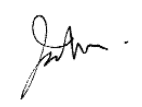MEDICAL CENTER
PALO ALTO, CALIFORNIA
DEPARTMENT OF GENETICS
School of Medicine
1. All you've sent me is under serious review.
2. It would be nice to
have a photographic matrix to trace the CitIndex vectors. But it would
have to hold something like lO6![]() squared
bits. I.E. at 10 µ resolution, it would be 10 meters on each side.
(If I recall, the rotating disks that IBM uses for such memories have about
106 bits each.) Someday, we will use an electron microscope
to read out nanostorage, but I imagine there is already adequate pressure
from computer needs generally to motivate looking for such advances, Actually,
since a citation index will be almost empty (about 8,000,000 locations
filled among
squared
bits. I.E. at 10 µ resolution, it would be 10 meters on each side.
(If I recall, the rotating disks that IBM uses for such memories have about
106 bits each.) Someday, we will use an electron microscope
to read out nanostorage, but I imagine there is already adequate pressure
from computer needs generally to motivate looking for such advances, Actually,
since a citation index will be almost empty (about 8,000,000 locations
filled among ![]() the
1,000,000,000,000 available) it would not make the most economical
use of such a memory. (I should add that a cathode ray tube memory has
about 1000 x 1000 bits on it, just about enough for the most abbreviated
index.)
the
1,000,000,000,000 available) it would not make the most economical
use of such a memory. (I should add that a cathode ray tube memory has
about 1000 x 1000 bits on it, just about enough for the most abbreviated
index.)
![]() 3. AU of which points to the issue I hadn't adequately explained
before, about using codes for the references so
3. AU of which points to the issue I hadn't adequately explained
before, about using codes for the references so ![]() citational clusters tend to come together on the tapes, just to shorten
the sorting procedures. You probably do this anyhow. I just mean that you
take full advantage of what you already know about the citational structure
of the literature, e.g. the likelihood of cross-
citational clusters tend to come together on the tapes, just to shorten
the sorting procedures. You probably do this anyhow. I just mean that you
take full advantage of what you already know about the citational structure
of the literature, e.g. the likelihood of cross-![]() to the same journal, language, discipline, author, in setting up the machine
codes. One point about cutting up the total
to the same journal, language, discipline, author, in setting up the machine
codes. One point about cutting up the total ![]() into disciplines is that the search times in cycling procedures may tend
to go as the square of the number of items in the subset, but this
may be avoidable.
into disciplines is that the search times in cycling procedures may tend
to go as the square of the number of items in the subset, but this
may be avoidable.
4. You might enjoy thinking
what the vector representation looks like in polar![]() coordinates.
But you need an equivalence for a radius and a vector angle when a source
becomes another' s reference.
coordinates.
But you need an equivalence for a radius and a vector angle when a source
becomes another' s reference.
5. The enclosed should be self-explanatory (Swift is an officer in the new Society for Cell Biology) it is a blind copy to you.
6. Since you put Harpers
into C/C "Social', I dare to ask, as I have long meant ![]() whether
you could get somebody to index the New Yorker. I have reams of
old issues at home that I can' t bear to throw out, but find impossible
to locate anything in. And I imagine this is not so
whether
you could get somebody to index the New Yorker. I have reams of
old issues at home that I can' t bear to throw out, but find impossible
to locate anything in. And I imagine this is not so ![]() for
our household.
for
our household.
Lots more, but must run/

 Carmas , IRE-Audio
Trans., AU-9 (5) 174 , 1961 has a neat note on the density of information
storage systems. Also in June± 1962 Proc IRE. Which also brings
up question, how investigate what market there would be for a semi annual
cumulation of C/C. on microcard which any library and many investigators
could find a great convenience for lookup, in place of keeping the bulk
of a year's past issues.
Carmas , IRE-Audio
Trans., AU-9 (5) 174 , 1961 has a neat note on the density of information
storage systems. Also in June± 1962 Proc IRE. Which also brings
up question, how investigate what market there would be for a semi annual
cumulation of C/C. on microcard which any library and many investigators
could find a great convenience for lookup, in place of keeping the bulk
of a year's past issues.